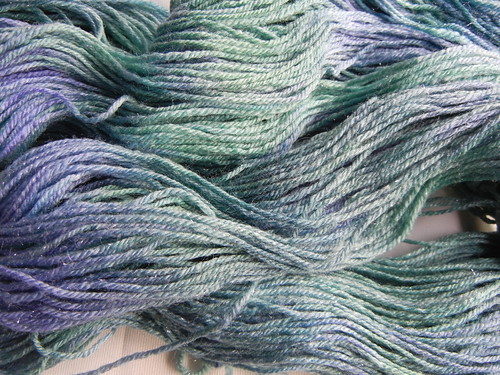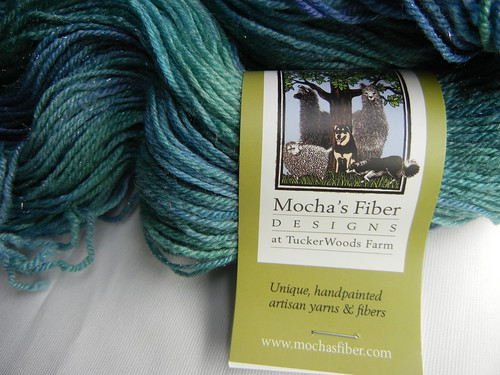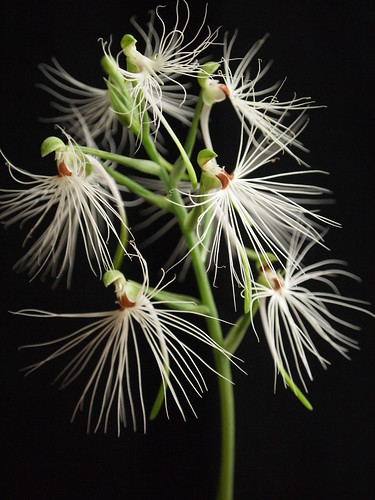
There are more and more places to get awesome limited-edition yarns these days. Sheep and Wool festivals, Stitches events, and Vogue Knitting Live all feature amazing stuff you can't get at most local yarn shops or from most big discount yarn retailers. You can get most of them online, but then you can't experience them before buying. And the experiencing is definitely part of the fun.
I went to VK Live in New York in January, wanting a yarn fix. O did I ever get a yarn fix. And this was one of the first things I found:

Silver Optima "Peacock." 63% Merino, 20% Silk,15% Nylon, with a fine silver thread. Smooshy fluffy shiny sparkly yarn heaven.
I partook of but one skein. I've been doing lots of one-skein things lately. What to make of this one skein? I'm in cowl/neckwarmer mode so that seemed logical. The Enormous Ravelry Queue I've developed yielded many fine project ideas.
The Smoke Ring Cowl won the beauty contest. The flat areas show off the colors of the yarn nicely, the raised cables show off the sparkle, and knitting it in the round was tons of fun because of the cable and lace combo. Alas I have yarn left over! Nearly 1/3 the skein. I guess I'll save it along with all the other leftover handpaints for the future Missoni Scarf project...

